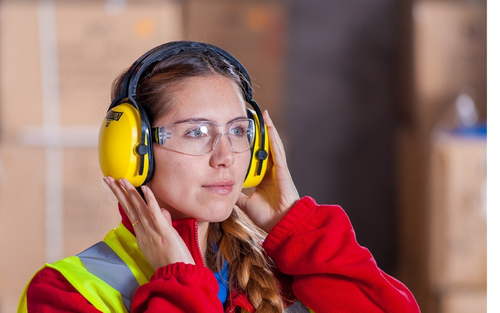How to Prevent Hearing Loss
Hearing damage isn’t always the result of explosions or other single, loud noises. A lot of damage occurs at much lower levels and more gradually, especially if you’re exposed to constant low background noise. Noise intensity, duration of exposure, and the type of sound all contribute to how it can damage your hearing.
Even slight hearing loss can have an impact on your life, and the damage is irreversible above certain decibel levels. Symptoms include ringing in your ears, noises sounding more muffled, and difficulty following normal conversations. Know when to put on hearing protection and what protection is best for your work.
Know Your Decibels
Decibels (dB) are the units used to measure the intensity of a sound, with higher numbers meaning a more intense sound. Normal conversations take place at around 40 dB; a vacuum cleaner or hair dryer comes in at around 70 dB, and a jet taking off can get to over 140 dB. Any prolonged exposure to noises above 85 dB can cause permanent hearing loss, and 130 dB is the threshold of pain. Understanding common noise levels in your industry or worksite and testing noise levels with a sound meter can help you choose your protection.
Make High-Noise Checklists a Part of Your Workplace
As an employer, post “high noise area” signs and regularly review your hearing protection measures. Provide training on hearing protection use among employees. Rotate your crews frequently to control their exposure to noise, and insulate noisy equipment where possible. Inspect your hearing protection devices for cleanliness, cracks, and tears, and replace any out-of-order pieces immediately.
Offer a Range of Hearing Protection Options
Employers should have working, properly-fitted hearing protection available for all work environments. Comfortable earmuffs can be incorporated into PPE for many situations, including headbands, bands under the chin or behind the head, neckbands, or mounted on hard hats or welding helmets. Dielectric headphones exist for electrical hazards. In hot environments or other situations where earmuffs need to be removed temporarily, or just because more protection is better, earmuffs can be supplemented with disposable safety earplugs. Earplugs come in several styles: pre-molded, with and without inner plugs, custom-molded, corded, disposable, and reusable. Consider which qualities will benefit you or your workers and stock up to keep everyone’s hearing protected.
Hearing Protection from PK Safety
Hearing protection is an important part of safety, and PK Safety has the experts that can help you stay as safe as possible. When it’s time to buy or replace your hearing protection, whether you’re on the job or doing work around the house, PK Safety has the highest rated ear protection. Contact PK Safety’s team of experts with questions on selecting the right safety equipment for your needs.
Recent Posts
-
Why Hi-Vis Winter Work Gear is Essential for Safety During the Cold Months | PK Safety
When temperatures drop and daylight hours shrink, outdoor workers face additional hazards that incre …Oct 31st 2024 -
Self Braking Descender: Advanced Rope Control for Fall Protection | PK Safety
For professionals working at heights, controlled descent is critical. Whether you’re a window cle …Oct 30th 2024 -
Hand and Eye PPE Machinists Rely On | PK Safety
Machining environments are inherently dangerous, with workers often surrounded by heavy machinery …Oct 27th 2024





